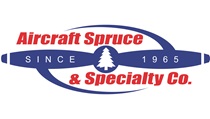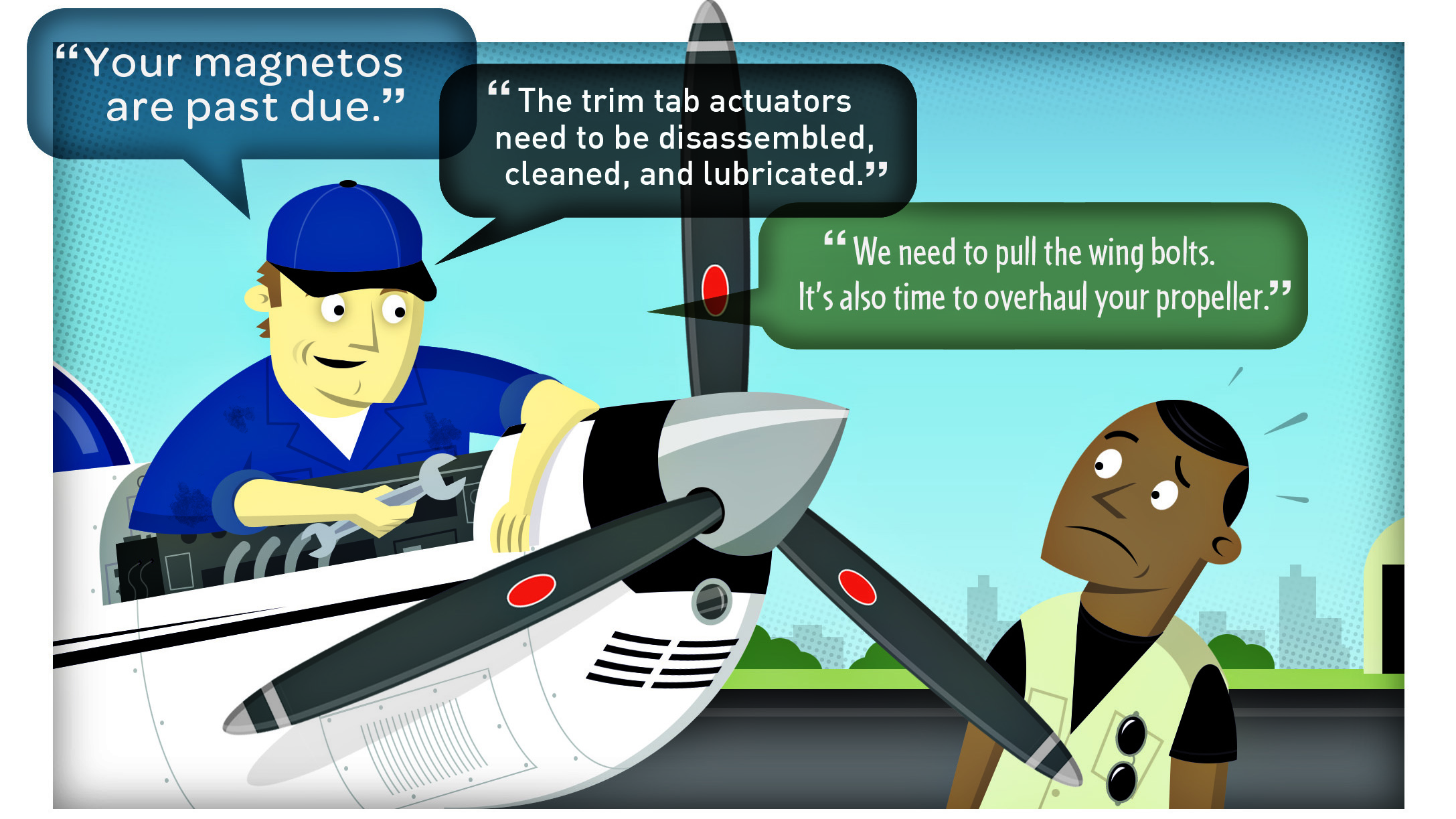
Opinion: Savvy Maintenance
By the Book? Must manufacturers’ maintenance guidance be followed?

“It has been six years since your propeller was last overhauled, so we’re going to have to overhaul it this year as required by Hartzell.”
“Your magnetos are past due. Continental requires that they be overhauled every four years.”
“The trim tab actuators need to be disassembled, cleaned, and lubricated—the Cessna maintenance manual says this must be done every 200 hours.”
“The Instructions for Continued Airworthiness for your Garmin autopilot requires that the servo clutches be checked for proper breakaway torque at every annual inspection.”
“We need to pull the wing bolts on your Bonanza and send them out for nondestructive testing—Beech requires this every five years.”
“The regulator on your STCed oxygen system needs to be sent out for overhaul every five years according to the manufacturer’s Instructions for Continued Airworthiness.”
A&Ps tell aircraft owners stuff like this all the time, and most owners consent to having the work done in the belief that it’s required. In most cases, the A&P is acting in good faith. Aircraft mechanics are trained to do things “by the book,” and most truly believe that the various scheduled maintenance tasks in the manufacturer’s maintenance program are both mandatory and prudent. But are they really?
Generally, no. They’re almost never required by the FAA, even if the aircraft manufacturer says they’re mandatory. Furthermore, doing them often is at best a waste of the owner’s time and money, and at worst creates a problem where none previously existed.
What does the FAA require?
Mechanics often are confused about exactly what maintenance is or is not required by regulation. A large body of FAA orders and letters of interpretation makes it clear what the FAA’s position is on this subject, but few mechanics have ever read any of this stuff or received any training on the subject.
Even FAA airworthiness safety inspectors at the flight standards district offices are confused about this, most of them having been trained as A&Ps before going to work for the FAA. Recently, FAA headquarters issued a national policy notice (N 8900.410) to educate them. Although this excellent six-page document was intended for consumption by FAA employees, it makes very useful reading for mechanics and aircraft owners as well. You can find it online (search 8900.410 at http://fsims.faa.gov).
Part 91 operators are almost never required to comply with such manufacturer-specified when-tos.Here’s the CliffsNotes version.
A manufacturer’s maintenance guidance comes in two different flavors: “how-tos” and “when-tos.” How-to guidance provides the specific methods, techniques, and practices for performing a maintenance task, and following that guidance is the responsibility of the mechanic doing the work. When-to guidance states when or how often a maintenance task is to be performed, and responsibility for getting it done at the proper intervals is the responsibility of the aircraft owner. This how-to and when-to guidance is communicated by the manufacturer in three ways: maintenance manuals (MM), instructions for continued airworthiness (ICA), and service bulletins (SB).
Because compliance with how-to guidance is a mechanic responsibility, the rules for doing so are in FAR Part 43 (which speaks to mechanics):
§43.13 Performance rules (general).
(a) Each person performing maintenance, alteration, or preventive maintenance on an aircraft, engine, propeller, or appliance shall use the methods, techniques, and practices prescribed in the current manufacturer’s maintenance manual or Instructions for Continued Airworthiness prepared by its manufacturer, or other methods, techniques, and practices acceptable to the Administrator, except as noted in §43.16.”
§43.16 Airworthiness limitations.
Each person performing an inspection or other maintenance specified in an Airworthiness Limitations section of a manufacturer’s maintenance manual or Instructions for Continued Airworthiness shall perform the inspection or other maintenance in accordance with that section…
The first of these rules say that when a mechanic performs maintenance on your aircraft, he or she is required to follow the how-to guidance (“methods, techniques, and practices”) set forth in the manufacturer’s current maintenance manual or instructions for continued airworthiness—or use an alternate procedure that is “acceptable to the administrator.”
The second rule says that if the manufacturer’s maintenance manual or instructions for continued airworthiness contains a special section titled “Airworthiness Limitations,” then the mechanic is required to follow any how-to guidance located in that section to the letter, and may not use alternate acceptable procedures. Note that recent-design aircraft certified under Part 23 generally have an airworthiness limitations section in their maintenance manual, while legacy aircraft certified under the older Civil Air Regulations Part 3 generally do not. If you own a Cirrus, Diamond, or Columbia, you have to worry about airworthiness limitations, but if you own a Bonanza, Centurion, Mooney, or Saratoga, you don’t.
What if a mechanic wants to perform a task in some other fashion than what the manufacturer’s guidance calls for? FAR 43.13(a) allows him to use an alternate method so long as it’s “acceptable to the administrator.” But what does that mean?
The best answer comes from FAA Order 8900.1 Volume 6 Section 14 (“Technical Data”), which makes it clear that an alternate method may be “acceptable to the administrator” even if the FAA has never seen it: “The how-to instructions do not need to have any specific FAA acceptance or approval as long as the person using them has a reasonable expectation that the FAA will find it acceptable for the purpose for which it was created, when and if the FAA reviews it.”
The bottom line is that while most A&Ps will perform work using the how-to instructions provided by the manufacturer, they are not required by regulation to do so as long as the alternative procedure they use is reasonable. The FAA would have the burden of proof of showing the procedure to be unacceptable (e.g., noncompliant with some regulation) before the FAA could violate the mechanic. That almost never happens.
What about when-tos?
“When-to” guidance includes manufacturer-specified inspection, overhaul, and replacement intervals, as well as other manufacturer guidance about how frequently various maintenance tasks are to be performed. Virtually every maintenance manual contains a long list of scheduled maintenance tasks—things to be done every 50 hours, every 100 hours, every 12 months, et cetera. The maintenance manual for my Cessna 310 contains more than 250 such items.
Manufacturers of engines, propellers, and appliances (such as magnetos and vacuum pumps) usually specify times between overhauls (TBO) or times between replacement (TBR) in maintenance manuals, instructions for continued airworthiness, or service bulletins. Lycoming, Continental, Hartzell, and McCauley all set forth their engine and propeller TBOs in service bulletins.
Part 91 operators are almost never required to comply with such manufacturer-specified when-tos, simply because there is no regulation in the FARs requiring them to do so. There are only two exceptions to this general rule: If such intervals are mandated by an FAA airworthiness directive (AD), or if they are set forth in an FAA-approved airworthiness limitations section of the maintenance manual or instructions for continued airworthiness, then compliance is required per FAR 91.403.
If you fly a Part 23 aircraft whose maintenance manual or instructions for continued airworthiness has an airworthiness limitations section, you are required to comply with any inspection, overhaul, or replacement intervals prescribed in that section. When-to guidance that appears in any other section of the maintenance manual, or instructions for continued airworthiness, do not need to be complied with. If you fly a legacy CAR 3 aircraft (like most of us do), your maintenance manual and instructions for continued airworthiness won’t have any airworthiness limitations. If you fly behind a Continental or Lycoming engine, those engines don’t have any airworthiness limitations, either.
It makes no difference if the manufacturer uses compulsory-sounding words like mandatory, required, must, or shall. No manufacturer has the authority to compel you to perform any maintenance task you don’t want to do. Only the FAA has that authority.
I’m not advising you to ignore all manufacturer when-to guidance. Some of it makes sense and is prudent. For example, it certainly is a good idea to do 500-hour magneto IRANs (inspect and repair as necessary) and 50-hour oil filter changes. But a lot of manufacturers’ when-to guidance is gross overkill for most owners. While it might make sense to do six-year propeller overhauls on an aircraft tied down outdoors in Tampa, it makes no sense for one hangared in Denver.
A Part 91 operator is never required to comply with any manufacturer’s service bulletins—even those marked mandatory or critical—unless compliance is mandated by the FAA by AD. Again, I’m not saying that you should blindly ignore all service bulletins; some of them are quite important. I’m simply saying that whether you choose to comply with any particular service bulletin is totally up to you—compliance is not required by regulation, and lots of service bulletins aren’t worth complying with.
Don’t blame your mechanic
Why do so many mechanics persist in telling their customers that their engines, propellers, magnetos, trim tab actuators, and oxygen regulators need to be overhauled at certain manufacturer-prescribed intervals? Usually because they believe it to be true. When I was studying to obtain my A&P certificate, all the training materials stressed that manufacturer’s guidance is always to be followed to the letter. It wasn’t until I started reading obscure FAA orders and notices and letters of interpretation and discussing the issue with rulemaking lawyers at FAA headquarters that I discovered that most of what A&Ps (including me) have been taught about this subject is simply wrong.
Mike Busch is an A&P/IA. Email [email protected]



